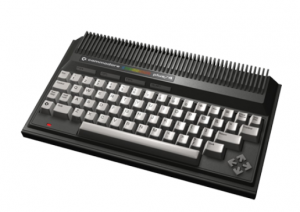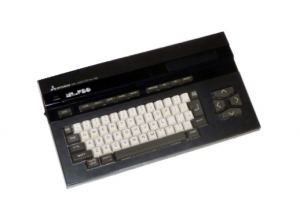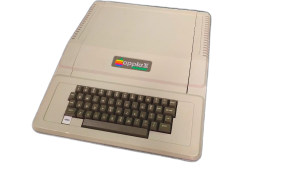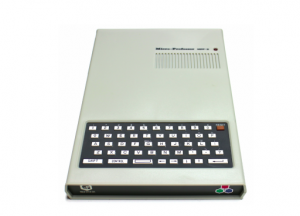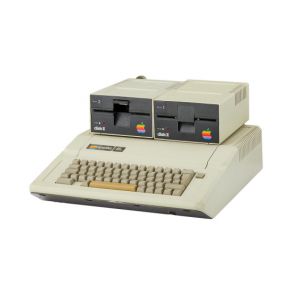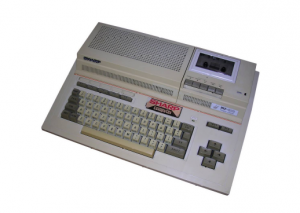The Portable Classic:
Apple IIc in Retrospect
By the mid-1980s, Apple had already established itself as a leader in the personal computing revolution. The Apple II series, beginning in 1977, had brought computers into homes, schools, and small businesses, and models like the Apple IIe had cemented the brand’s reputation for reliability, expandability, and educational value. Yet despite these successes, Apple faced a challenge: the market was changing. Computers were becoming more compact, portable, and user-friendly, and competitors such as IBM, Commodore, and Atari were introducing machines designed to appeal to consumers who wanted more convenience and style. Into this context came the **Apple IIc**, released in April 1984, a computer that combined the proven architecture of the Apple II with a new vision of portability and elegance.
The Apple IIc, or “compact,” was designed to be a fully self-contained, lightweight version of the Apple IIe. It retained the familiar **MOS 6502 processor**, running at 1 MHz, and was compatible with the existing Apple II software library, ensuring that users could access hundreds of titles without concern for compatibility. Memory was configurable at 128 KB, expandable to 1 MB through special RAM cards, giving it sufficient capacity to run both games and professional applications. Unlike previous Apple II models, which were often bulky and required separate keyboards, monitors, and peripheral boxes, the IIc integrated the keyboard and mainboard into a single portable chassis, roughly the size of a modern briefcase. Its off-white, sleek plastic case was designed to evoke modernity and convenience, signaling Apple’s intention to make computing more approachable to a broader audience.
For educational institutions, the IIc was particularly appealing. In the mid-1980s, schools around the United States and parts of Europe were increasingly adopting personal computers as teaching tools. The Apple IIc’s portability allowed teachers to move machines between classrooms and labs, while its compatibility with existing Apple II software meant that school districts could leverage their investments in educational programs. In Finland, where Apple IIe and IIc machines found a small but enthusiastic following, the IIc offered similar advantages: a professional-grade computer that could be transported easily, used for programming instruction, and run local or imported educational titles.
The Apple IIc’s software ecosystem was one of its greatest strengths. By 1984, the Apple II platform had an extensive library of programs, including word processors like **AppleWorks**, spreadsheets like **VisiCalc**, educational software like **Logo** and **The Oregon Trail**, and countless games. Users could transition seamlessly from one model to another, and software purchased for an IIe would run on the IIc with little or no modification. The combination of portability, compatibility, and style made the IIc particularly attractive to home users who wanted a complete computing solution without the clutter and complexity of full-size desktops.
Critics at the time praised the Apple IIc for its build quality, portability, and elegant design. Reviewers noted that the machine was quiet, reliable, and relatively easy to set up, especially compared to earlier Apple II models, which could be intimidating for first-time users. Its limitations were also noted: the lack of internal expansion slots meant that hobbyists and power users could not extend it as extensively as the IIe, and the reliance on external floppy drives was seen as less convenient than integrated storage solutions emerging in other systems. Still, the overall reception was positive, particularly among consumers and educators who valued convenience and consistency.
Apple’s marketing of the IIc emphasized portability and ease of use. Advertisements showcased students carrying the computer between classes, families using it in living rooms, and professionals transporting it to offices. The message was clear: the IIc was designed for a new kind of user, one who wanted the power of the Apple II without the bulk and complexity of earlier models. This approach anticipated broader trends in personal computing that would come to dominate in the late 1980s and 1990s, including the development of laptops and portable workstations.
The Apple IIc also highlighted Apple’s philosophy of **design and user experience**. While competitors were often focused on raw power or low cost, Apple emphasized integration, aesthetics, and simplicity. The IIc embodied these principles: a compact, visually appealing machine that delivered reliable performance and maintained the brand’s commitment to quality. Its introduction reflected Apple’s dual strategy in the 1980s: continue serving existing Apple II users while attracting a new audience with a machine that was approachable, stylish, and portable.
The broader impact of the Apple IIc is also notable. It extended the Apple II family into new markets, providing an option for users who might have been deterred by the size or complexity of the case. Its release reinforced Apple’s dominance in schools and among small businesses, ensuring that the Apple II ecosystem remained relevant even as the Macintosh line began to take shape. By maintaining compatibility with existing software, the IIc helped preserve a generational knowledge of computing skills, bridging the gap between early Apple II machines and the coming Macintosh era.
In retrospect, the Apple IIc represents both continuity and innovation. It continued the Apple II legacy of reliability, educational value, and software richness, while introducing portability and integrated design that anticipated the future of personal computing. The Apple IIc’s influence extended beyond its immediate sales: it demonstrated that computers could be both powerful and compact, professional and approachable, functional and stylish. For many users, it was their first introduction to the Apple ecosystem, providing a platform for learning, creativity, and productivity.
Looking at the Apple II series as a whole, one can trace a remarkable trajectory. It began in 1977 with the original Apple II, a machine that made personal computing accessible to hobbyists and early adopters. It evolved through the II Plus, IIe, and IIc, each iteration refining the user experience, expanding capabilities, and broadening the market. Later models, such as the Apple IIGS, brought color graphics, improved sound, and enhanced performance while retaining backward compatibility. The Apple II family remained in production for more than 15 years, officially ending in 1993. This longevity is a testament to the design, versatility, and cultural impact of the series, which laid the groundwork for Apple’s later successes and established computing as a household and educational necessity.
Ultimately, the Apple IIc is remembered as a milestone in that journey: a machine that combined elegance, portability, and reliability with the rich software heritage of the Apple II. It was not the most powerful computer of its time, nor the most expandable, but it represented a philosophy that continues to influence personal computing today: integration, usability, and thoughtful design. For those who owned it, the IIc was more than hardware; it was a tool for creativity, learning, and exploration — a compact window into the expanding world of the digital age.


